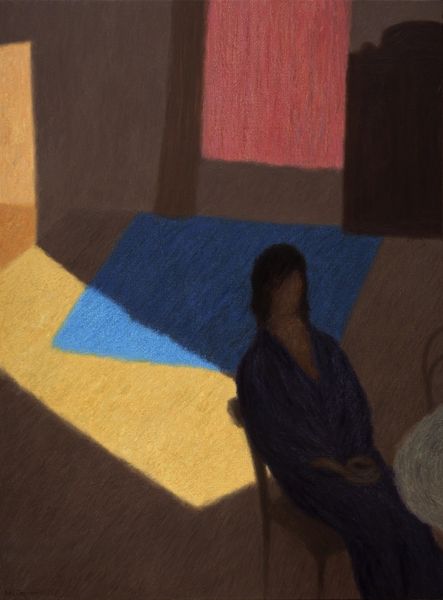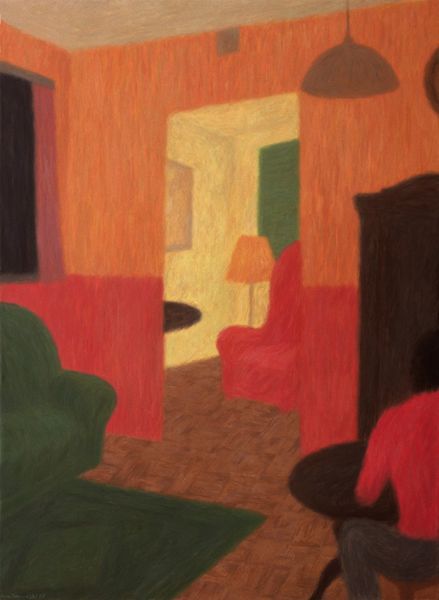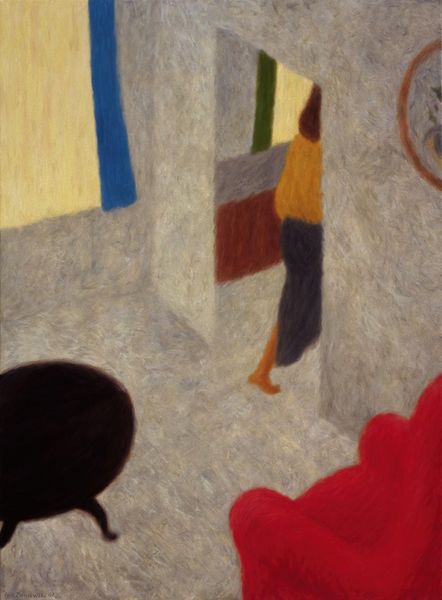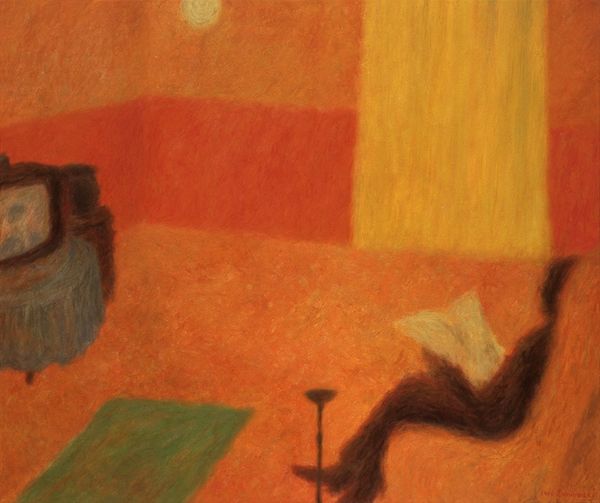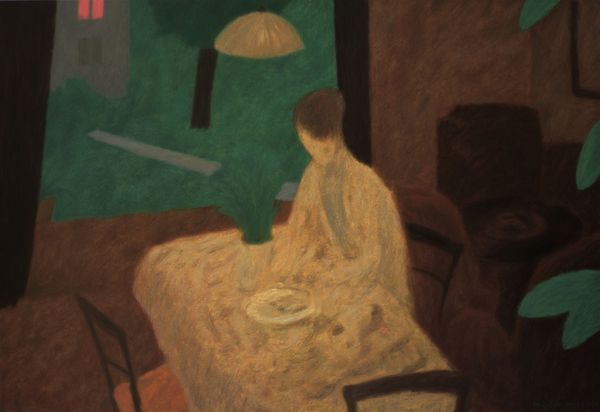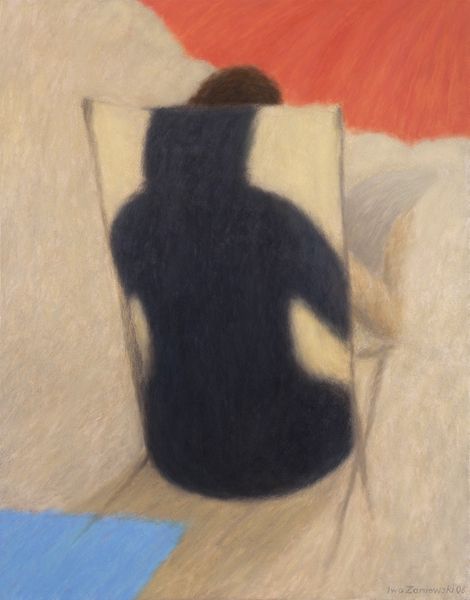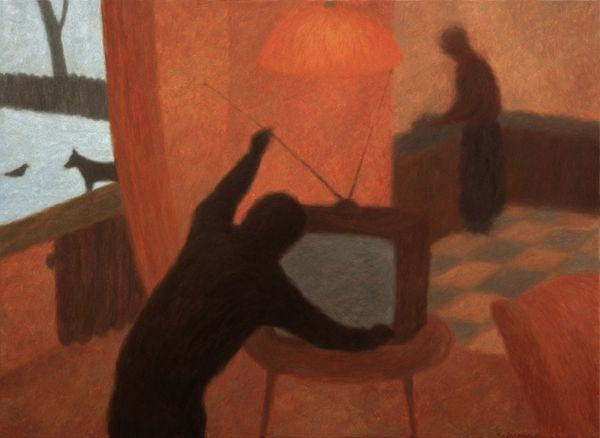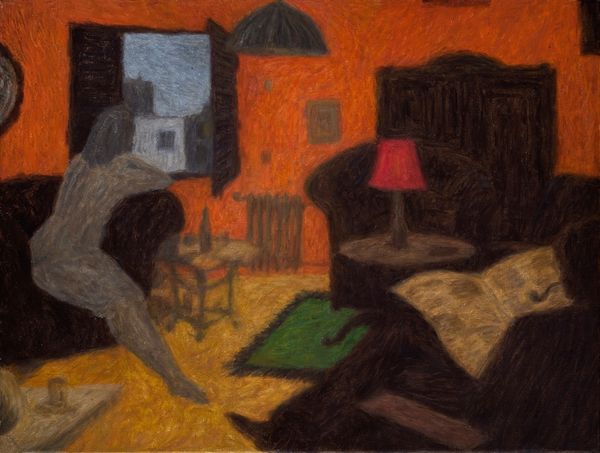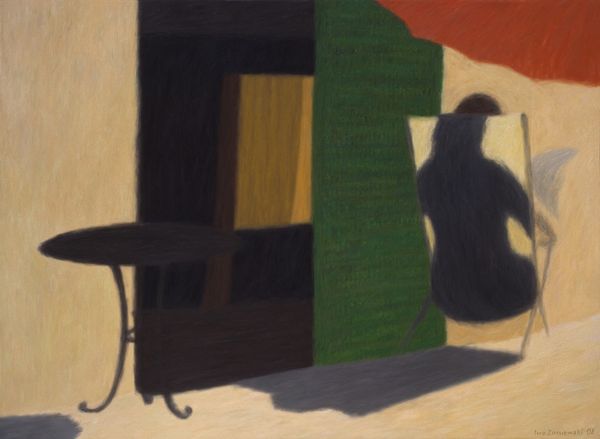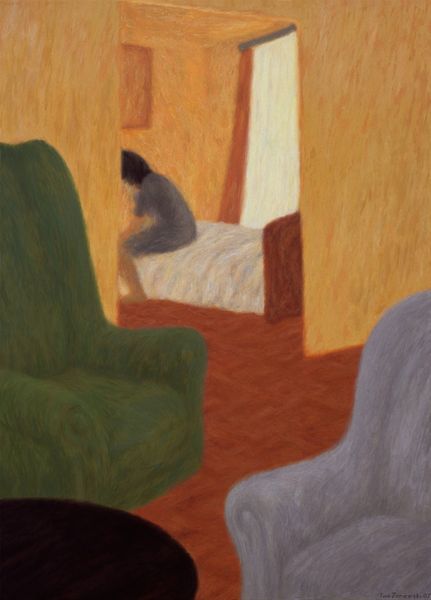
drawing, charcoal, pastel
#
portrait
#
drawing
#
charcoal drawing
#
figuration
#
pastel chalk drawing
#
expressionism
#
charcoal
#
pastel
Copyright: Modern Artists: Artvee
Editor: Iwo Zaniewski's drawing, "Coffee in the Kitchen," crafted with charcoal and pastel, immediately strikes me with its quiet unease. The figures seem shrouded in shadow, and the colour palette contributes to a sense of melancholic stillness. What do you see in this piece? Curator: The subdued palette and deliberately obscured faces carry an emotional weight. Consider the long-standing use of enclosed spaces, like kitchens, in art, especially concerning women. What emotional or psychological narratives do such images evoke for you? Editor: I see what you mean about the space itself. Kitchens, especially, carry the weight of daily routines. Does the title add another layer of significance? Coffee implying routine, but in a scene that feels unsettling? Curator: Precisely. Notice how the window glows a forbidding red? Zaniewski employs potent symbols here. We see figures partially erased in shadow and architectural features as sites of psychological resonance. Does this "interior" feel, in any way, comforting? Editor: No, not really. It feels more like an internal landscape, a kind of emotional state, rather than just a room. Curator: That’s a very insightful reading. We sense this not merely as a depiction, but also as an experience—the experience of, say, domestic isolation. Or maybe simply an illustration of quotidian unease. Do the positions and relative sizes of figures carry messages? Editor: Definitely, one figure almost disappears, blending into a piece of furniture. Curator: How interesting that the quotidian, that "ordinariness", often masks or conceals deeper human states of feeling! Editor: I never would have seen all of those layers. Thank you for sharing your insights! Curator: It was my pleasure. Thank you for sharing your perceptions on how a work with subtle visual cues can trigger such rich narratives.
Comments
No comments
Be the first to comment and join the conversation on the ultimate creative platform.
